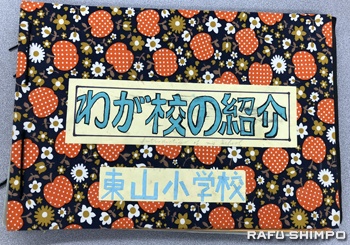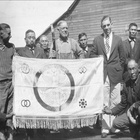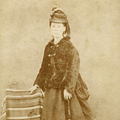Kuni Takes a Local as His Wife
Following the collapse of the Wakamatsu Colony, a settler by the name of Kuninosuke Masumizu (1849-1915) opted to remain in the town of Coloma.
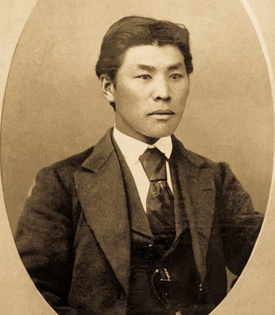
Known to many simply as Kuni, he worked as a carpenter and helped to build the Coloma Hotel and the Fresno Buddhist Church.
Many of the houses built by Kuni in the Coloma and Auburn areas were still standing in May 1930, as they were described in a May 28 article in the Nichibei Shinbun.
In 1877, Masumizu married Carrie Wilson, a woman of African and Native American descent and a resident of Coloma, and the couple eventually raised three children.
In his book Pacific Pioneers, historian John Van Sant explained that Kuni and his family relocated to Sacramento from Coloma sometime after 1880. To support his family, he worked as a farmer, a fisherman and an interpreter.
It was said that Kuni could speak several languages, including Japanese, English, and Spanish. On one particular occasion, he assisted a woman who had just arrived in America, as she needed to see a doctor but had little or no English ability.
The woman later expressed her belief that Kuni provided this service for a great many people.
Kuni passed away in 1915 at the age of 66, and was laid to rest in Colusa, a small town on the banks of the Sacramento River.
In Coloma (Images of America), author Betty Sederquist describes how his widow was paid a visit by the FBI, following the attack on Pearl Harbor Dec. 7, 1941. The agents had questions for Carrie Masumizu, as she had been married to a Japanese national.
Pacific Pioneers also noted that 85-year-old Carrie, as well as her children and grandchildren, identified themselves mainly as African American. Undaunted, the federal agents interrogated every member of the family.
Though it had been more than 26 years since Kuni’s death, the FBI sought to determine if his survivors were “enemy aliens,” because he himself was Japanese.
Some five generations on, some of Kuni’s descendants still live in California, including Penny Eugene Gibson, a resident of Stockton, and his younger brother Aaron Gibson, a resident of Sacramento.

“My grandmother had an old newspaper article that mentioned Kuni, and told us that we are of Japanese descent.” Penny told The Rafu. “Knowing that my ancestor was one of the first colonists from Japan, and is part of our family history, is something I feel is very special for me.”
Gibson regrets that he never received any of Kuni’s belongings, but he has a keen interest in his relatives who are living somewhere in Japan.
“I would like to visit Aizu Wakamatsu someday,” he said “My Japanese relatives might live there. I hope I can find them.”
A Record of Intrepid Travelers
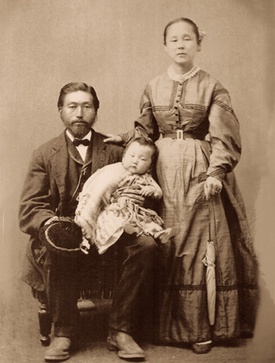
Matsugoro Oto, believed to be a member of the original Wakamatsu party, was a carpenter with the colony and returned to Japan after the breakup of the colony. His name has appeared in numerous documents about the Wakamatsu Colony.
In a bulletin titled “Wagon Wheels,” published by the Colusi County Historical Society, historian Akiji Yoshimura wrote that Kuni and Matsugoro helped to build the historically renowned Coloma Hotel.
In a Nichibei Shinbun article dated Sept. 28, 1927, Henry Veerkamp recalled the names of many Wakamatsu colonists, including Okei, Schnell, Matsunosuke Sakurai, Kuninosuke Masumizu, Sakichi Yanagisawa, Matsugoro and others.
To help verify who took part in that original trip from Japan to California, The Rafu obtained records from Japan’s Ministry of Foreign Affairs. The document lists a group of 20 travelers who were issued passports on March 13, 1869. These people are believed to be the Wakamatsu colonists.
Some of the colonists whose names and stories have become well known over the decades are included on the Ministry of Foreign Affairs list, such as Matsunosuke, Sakichi and Matsugoro.

The document further shows how some were hired by a Prussian man named Kremer, who worked with Schnell and his brother Edward in a Yokohama foreign settlement between 1865 and 1869. This same document indicates that Matsugoro returned to Japan on Jan. 6, 1876.
Similar names are also seen in the 1870 census in Coloma, where the Wakamatsu Colony was established.
A Pioneer’s Hand in Japanese Wine
More than a century later, a junior high school student in Japan has discovered her personal connection to those who bravely sought a new life across the Pacific.
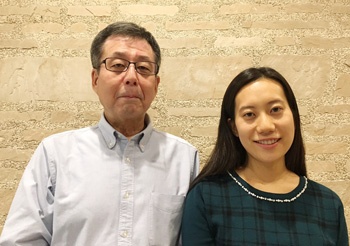
In 2014, Naori Shiraishi, a resident of Tokyo, was conducting research for a family tree project as part of a summer school class. She discovered family stories handed down through generations, one of which brought an intriguing surprise. Naori’s grandmother, Kyoko Shiraishi, told her that they share an ancestor who was born in America.
With the information in her family stories as a starting point, Naori began a quest to learn about her ancestors. She gathered data from previous family trees, school alumni directories and published books.
Eventually, Matsugoro Oto emerged as an ancestor.
There is a small amount of debate among some researchers and historians over the correct pronunciation of Matsugoro’s surname. Written in kanji, 大藤 can be read either Oto or Ofuji, but recent study has led many to believe that Oto is the most likely iteration.
“In telling some of the family stories, my grandmother told me that her grandmother, Saku Shimazaki, was born in California after her parents settled there,” Naori explained, adding, “Her maiden name was Oto.”
Naori’s grandmother, Kyoko, told The Rafu, “My mother told me that my grandmother Saku’s parents went to America with a Japanese group. They cultivated land but their plan ended in failure and her family returned to Japan. After Saku’s parents went back to Japan, her father went to Yamanashi Prefecture to cultivate fruit. This is what I have heard from my mother, my aunt and my family members, as part of our family story.”
It is known that Matsugoro worked in Yamanashi to cultivate grapes for wine-making after his return to Japan.
Once back home, Matsugoro worked for the Interior Ministry’s Laboratory for the Promotion of Agriculture in Shinjuku in Tokyo, in May 1876. The laboratory was involved in testing the canning process for fruit, with Matsugoro testing the production of canned tomatoes. Another of the Wakamatsu colonists by the name of Sakichi Yanagisawa helped produce canned peaches.
Soon thereafter, Matsugoro was hired as a prefectural official in Yamanashi, to oversee the process of producing wine. Working at the Yamanashi Prefectural Vineyard, located on the site of Kofu Castle, Matsugoro was believed to have learned wine-making skills in California before he returned to Japan.
Dr. William Gray Dixon, a Scottish professor of engineering at Tokyo’s Imperial College (now the University of Tokyo), met Matsugoro during an 1877 visit to Yamanashi. Dixon later wrote “The Land of the Morning,” in which he explained how Matsugoro had learned wine-making and fruit cultivation methods in California, and that in Yamanashi, he was making wine and cultivating fruits such as apples, pears, peaches, berries, grapes and vegetables that were imported from America.
In April 1885, Matsugoro was invited as an expert vintner to visit the Morita Vineyard. The vineyard was owned by the Morita family, whose descendant Akio Morita became the co-founder of Sony.
Diplomatic records confirm Matsugoro’s work at the Morita Vineyard, duties that included preparing draft budgets.
Matsugoro retired in 1888.
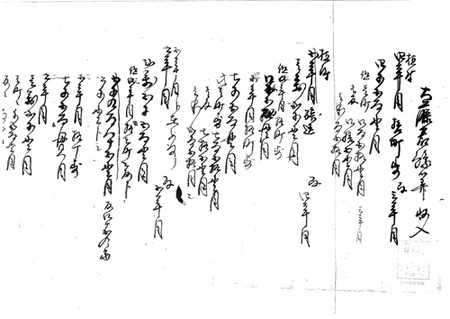
Shining a Light on a Lost Member of the Family

Enticed by her successful research and discoveries, the young student Naori enlisted the help of The Rafu in tracing the name of Matsugoro’s wife, also believed to be a member of the Wakamatsu Colony, but whose name was unknown.
With the assistance of Grandmother Kyoko, the wife of Matsugoro Oto was traced in the official government-issued family registry, known as koseki. The name of the woman who married Matsugoro was revealed.
According to the koseki, Naori’s ancestor from five generations earlier is Matsugoro, and his wife is Miwa.
Part 2 of this Rafu series mentions a September 1927 Nichibei Shinbun interview of Henry Veerkamp, whose family owned the land on which the Wakamastu Colony was established. In the article, he recalled a Japanese woman named Miwa at the colony. This woman he mentioned is believed to be the wife of Matsugoro Oto.
The family koseki lists Matsugoro as born on Feb. 17, 1838, and passing away May 10, 1890. Miwa was born in June 7, 1845. Ma-tsugoro and Miwa had five children, including Saku, Naori’s great-great-grandmother.
Born in April 13, 1873, Saku was the couple’s second daughter, indicating she came along after the collapse of the colony and before Matsugoro and Miwa returned to Japan.
The Yamanashi prefectural government and the koseki further show that Matsugoro was born in Chiba Prefecture, meaning that the Wakamatsu colonists consisted of not only of people from Aizu Wakamatsu, but from other areas as well.
Miwa had been unknown until now. Not even Naori’s family knew her name, but after a lapse of 150 years, more Wakamatsu colonists have begun to emerge from the shadows of history.
“I’m proud of my ancestors,” Naori said. “They went abroad 150 years ago from Japan, which had recently come out of its national policy of isolation. Like them, I want to look at the world from my own perspective, to have ambition, and to lead my own life.”
This spring, Naori successfully completed her college entrance exams and entered the University of Kyoto.
Modern Descendants of the Veerkamp Family
The site of Wakamatsu Colony was owned by the Veerkamp family for about 125 years. In 2010, the 272-acre property was purchased by the American River Conservancy, a nonprofit preservation group. The ARC owns and manages the Wakamatsu Colony site under the name Wakamatsu Farm.

Martha DeHaas is four generations removed from the family who eventually owned the land used by the Wakamatsu colonists, and one of several Veerkamp descendants who still live and farm near the site. She explained how the land had been passed down through the generations, but when her own grandparents passed away, the management of the wide expanse of land became an unmanageable burden.
“I had heard from my father about the Japanese colony,” DeHaas told The Rafu. “He said Japanese groups often visited the site to mourn Okei-san, and that they gave our family very beautiful gifts.”
She added that when she was a child, her family raised cows at the site, so Okei’s grave was surrounded with a protective fence.
Julie Akin Bauer, a fifth-generation Veerkamp, said her parents told her about the Wakamatsu Colony when she was a child. She feels the history of the Japanese settlement is part of her own family history.
“I had grown up with the story about the Wakamatsu Colony, so I always thought I would like to visit the monument of Okei-san in Aizu Wakamatsu someday,” Bauer said. Three years ago, she realized her dream, traveling to Aizu Wakamatsu to learn the history of those who left their home to make a new one in California.
For years, the Veerkamp family possessed a Japanese sword and a banner believed to be the former belongings of Henry Schnell, the Prussian businessman who helped the settlers from Aizu Wakamatsu make the original plans for their relocation to America in 1869. The sword and the banner, emblazoned with the mon or family crest of the the Aizu Han, have been donated to the State of California as a historic preserve.

A Lasting Bridge Between the U.S. and Japan
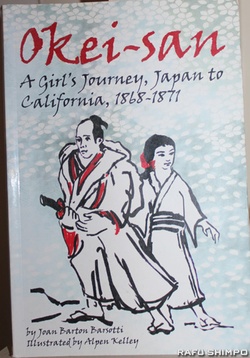
In El Dorado County, students in the fourth grade read Okei-san: A Girl’s Journey, Japan to California, 1868-1871 as part of their elementary school curriculum. Written by local author Joan Barsotti, the story is based on the life of the first Japanese believed to be laid to rest on the American mainland, and encourages students to learn her history. A field trip program has also been established, allowing students to visit Wakamatsu Farm and learn the history of the Wakamatsu Colony.
In 1969, Gov. Ronald Reagan proclaimed the site of Wakamatsu Colony to be a California Historical Landmark.
Gold Trail School, located next to the Wakamatsu site, established a sister-school relationship in 1980, to partner with Higashiyama Elementary School in Aizu Wakamatsu City, Okei’s hometown.
In the library at Gold Trail School, a mural of Japan’s iconic Mt. Fuji is painted on the wall, and the library is decorated with origami cranes, calligraphy and message books sent from students of Higashiyama Elementary.
Through the memories preserved by historians, family members, curious students – and even community newspapers – the history of the Wakamatsu Colony has become a bridge between America and Japan, a lasting point of cultural exchange.
This year marks the 150th anniversary of the first Japanese colony in North America. The American River Conservancy will host “Wakamatsu Fest 150,” a four-day event to celebrate those pioneers, from June 6 to 9.
Recently, tea trees have been planted in a corner of the site where the Wakamatsu Colony once stood. Years from now, those trees will continue to grow. When we can pick the tea leaves, that will be the time that the dreams of settlers of a century and a half ago – dreams that had ended in failure – will finally come true.
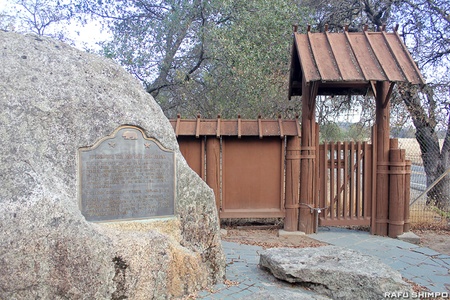
* * * * *
The author wishes to extend her gratitude to those who assisted in creating this story, and to cite the extensive sources of historical information:
- American River Conservancy
- An Interpretation of the Seiyo Oshiegusa and Three Officials who Introduced Western Culture into Koshu in Governor Fujimura’s Administration and their Surroundings (1870’s-1880’s) by Chushin Hosaka, emeritus professor of Yamanashi Gakuin University.
- “A study of establishment of passport system during the Meiji Restoration Period (1866-1870)” by Minoru Kamishiraishi.
- California Digital Newspaper Collection, Center for Bibliographic Studies and Research, University of California, Riverside.
- Chronicle And Directory For China, Japan and the Philippines for 1865 & 1869
- Coloma (Images of America) by Betty Sederquist.
- Diplomatic Archives of the Ministry of Foreign Affairs of Japan
- Hiroko Ikuta of Beikoku Shodo Kenkyukai (reading diplomatics)
- Hoji Shinbun Digital Collection Hoover Institution Library & Archives
- Kyoko Akaike, General Library of Yamanashi Gakuin
- Land of the Morning by William Gray Dixon
- “Linking Japanese Migration History and U.S. Census History: 1860-1870” by Miya Shichinohe-Suga.
- Nihon no Wine Tanjyo to Youran Jidai by Usuke Asai
- Nihon Syokubunka Jinbutsu Jiten by Tokio Saito
- Nihon Wine Tanjyo Ko by Michihiro Nakada, Yamanashi Prefectural Official.
- Pacific Pioneers by John Van Sant
- Reikei Resource Center (Akio Morita Library)
- Wagon Wheels published by Colusi County Historical Society
- Yoshimi Arai, Yamanashi Prefectural Library
*This article was originally published by the Rafu Shimpo on April 30, 2019.
© 2019 Junko Yoshida / Rafu Shimpo



